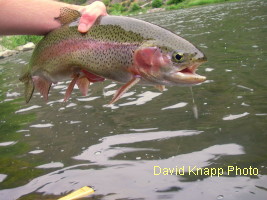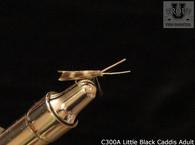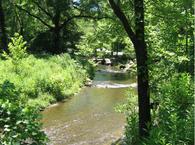
The Yakima River was named after the indigenous Yamama people and it rises in the Snoqualmie Wilderness area in central Washington. It flows from the East side of the Cascade Mountains through the rich pasture land of Kittitas Valley and into the Yakima River Canyon which is somewhat desert like in appearance. Three reservoirs, the Kachess, Keechelus and Cle Elum meet near Cle Elum to form the main river and it flows some 214 miles before joining the Columbia River.
Each of the three tailwaters has some trout fishing activity, but the fishing really begins after they meet. It is these three tailwaters that provide the Yakima with rich cool water which combined with 300 days of sunlight per year provide a fertile environment for aquatic insects including the Skwala Stonefly. All the dam headwaters provide good trout fishing, but the blue ribbon portion is the 80 miles between Easton Dam near the town of Cle Elum to the Rosa Dam between Ellensberg and Yakima. The water is controlled for irrigation of the orchids, pastures and crops in the fertile land of Yakima Valley.
Above the Cle Elum confluence the Yakima River is not suited for good floating but below there it becomes flat and suitable for floating as well as wading. In this section there are some channels but also some pools and some very nice long riffles. The next fourteen miles is through the upper canyon section with the most of the access is through the John Wayne Trail.
Three tributaries, the Teanaway, Swuak and Tanuem, enter this section of the river which make wading possible but only under low water conditions. As you continue down the Yakima, you will go through the farmland section where access is somewhat more limited due to the private land. This section can be floated but will be best under high water conditions. The next section down to the Rosa Dam sees more anglers as it flows through the Yakima Canyon and is best fished from drift boats.
Fly Fishing the Yakima River:
There are a wide variety of stream conditions on the Yakima however, we recommend a 5 or 6 weight floating line on a nine foot, five weight medium or fast rod for the most conditions.
Spring:
The spring of the year offers some excellent dry fly fishing resulting from numerous hatches. March will see the Blue-winged Olive hatches,earlier in the day followed by the Skawala Stoneflies later in the day. The March Browns will begin in March and will peak in April. Pale Morning Duns will be hatching from mid May through mid July. May will also see the American Grannon (Mothers Day Caddis). Snow run off will be a factor, so be patient. In order to take advantage of the abundant hatches we recommend the great insect imitations provided by the "Perfect Fly" line of flies available at Trout University.
Summer:
Caddis flies will continue to hatch in mid summer as well as the Golden Stoneflies and Yellow Sallies. Of course thee terrestrials like hoppers and wooly buggers will be effective especially near the fields. Dry flies should continue to do well.
Fall and Winter:
The Yakima water levels will drop in the fall but there will be hatches of the Light Cahills and the October Caddis.The second hatch of the BWOs and the Mahogany Duns will continue through November. For winter, the Midge nymphs and Streamers will be a good choice.
Access is not a problem as there are roads including Rt. 10 and Rt. 821 near the Yakima River as well as the John Wayne Trail. Be sure to respect private land.





